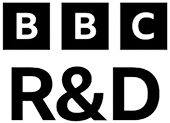
Is it possible to disclose AI use in a documentary without negatively affecting storytelling?
- The BBC wanted to leverage AI tools to “face swap” interviewees in a documentary (instead of face blurring or pixelization) in order to more clearly tell a story.
- The BBC knew it was necessary to be transparent about the use of AI and considered: how could they disclose to audiences that they were seeing synthetic faces?
- By applying the Framework, the BBC was able to implement transparent direct disclosures that enabled documentary audiences to view the subjects without the bias that is typically inherent with traditional anonymization techniques.
This is the BBC’s case submission as a supporter of PAI’s Synthetic Media Framework. Explore the other case studies

